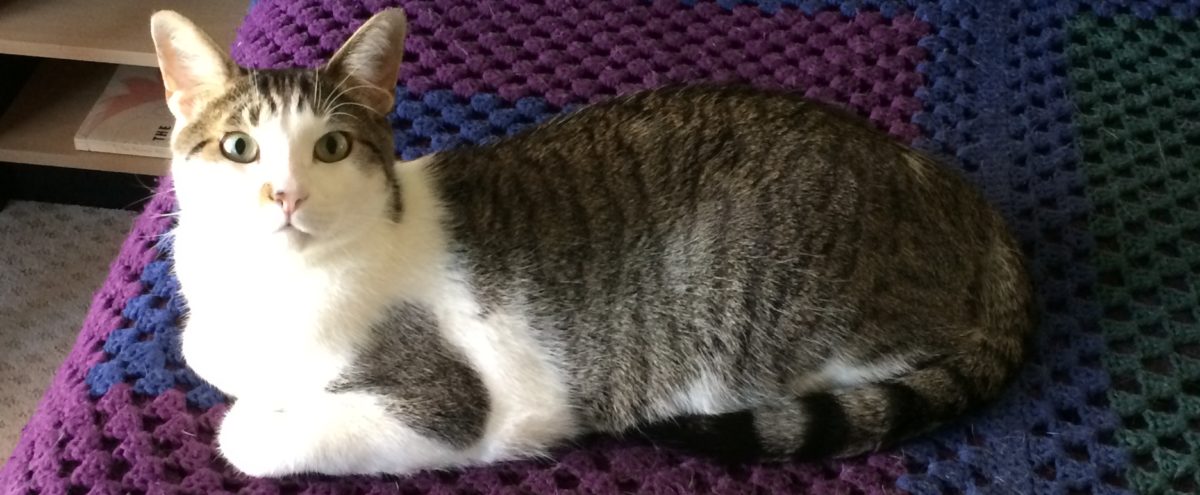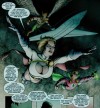Friday night I surprised Debbi by taking her to dinner at Sundance The Steakhouse, which we’d last (and first) visited for my birthday this year. It was as good as it was the first time!
Saturday we took the cats to the vet, Debbi taking hers in for a 2 pm appointment, then me taking mine in half an hour later. She was in-and-out and ran into me as I was arriving. It took longer for my guys to get their check-ups. Newton seems to be doing well enough given that he’s taking thyroid medication. Jefferson, however, has some really crummy teeth and his gums are looking pretty bad, including a spot that’s bleeding. He’s lost 3 pounds in the last year, and it could be because he’s having hyperthyroidism himself, or it could be because eating has been difficult because of his mouth. And the vet said there’s a chance that he could have a tumor which is bleeding. So both cats are getting blood tests, and we’ll see where to go from there. My bet is that Jefferson “just” needs some dental surgery.
Still, for 15-year-old cats, that’s not really too bad.
We had a more exciting day today, since I wanted to go up to the city for Borderlands Books‘ 12-year anniversary sale. We left early and got breakfast in San Carlos, but realized that we’d be getting to the bookstore well before their sale started, at noon. We tried going into Golden Gate Park to visit the botanical gardens, but there was no parking. However, we saw a sign on the way for the Disney Family Museum, which recently opened in the Presidio, and decided to go check that out.
Even with a $20 entry fee, I figured there was still some chance that it would be little more than a few trinkets that Diane DIsney Miller had inherited from her famous father, perhaps with some notes on his life. But in fact it was much more than that, and we spent more than two hours going through it (and could have spent more time than that).
There’s not much left inside that looks like an old Presidio building – they clearly spent plenty of money to make it a modern venue, with computerized displays in addition to the memorabilia, and even a theater in the basement. The reception area has hundreds of awards that Disney was given during his lifetime (including most of his Academy Awards) on display. Inside is an impressive collection of photos of Walt and his family, and many DIsney memorabilia, including a polo cup he won, one of the trains he built for his home, the fiddle his father played, and many of his early drawings (some the originals, most reproductions). The earliest known drawings of Mickey Mouse are among he collection.
The narrative is well-written, although the layout of the individual rooms makes it sometimes difficult to know where to start, so sometimes you experience things out-of-order. While it admirable grapples with a few of Disney’s less shining moments (such as the early 40s animators’ strike), it oddly glosses overt the construction of Disneyland, which occupied Walt for several years and was one of his greatest accomplishments.
While some have cautioned that the museum is more about Walt and less about Disney, anyone interested in either the man of his company ought to enjoy the museum. It’s a good companion experience to the biography of Disney I read a few months ago.
After the museum, we stopped for sundaes at Ghirardelli Square, and then headed to the bookstore, where I picked up a few things, and we got to see Borderlands’ two hairless cats, Ripley and Ash, the latter of whom I hadn’t met before.
The only blemish on the day was having trouble getting dinner cooked (stuffed pork chops from the supermarket that took about 25 minutes longer to bake than advertised), and watching the Patriots mysteriously hand the Sunday night football game to the Colts by not punting the ball on 4th-and-2 at their own 30, leading by 6 with 2:30 left in the game. WTF??? The Pats lost 35-34. Gah.
But that aside, it was a day of pleasant surprises, so I can’t really complain.












